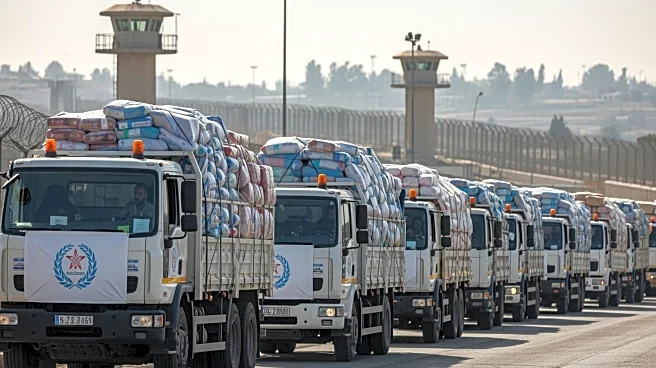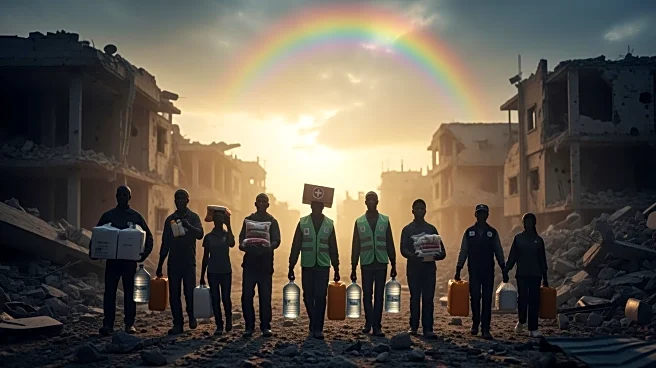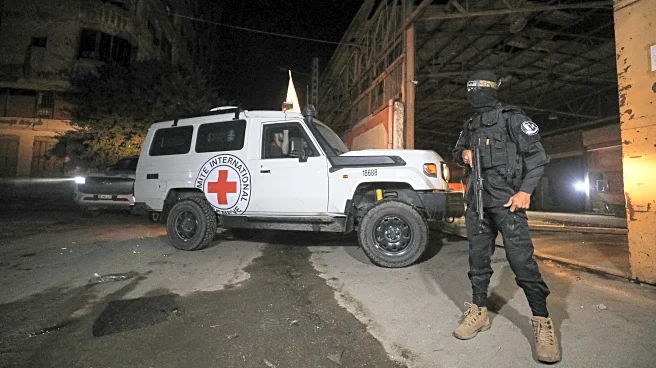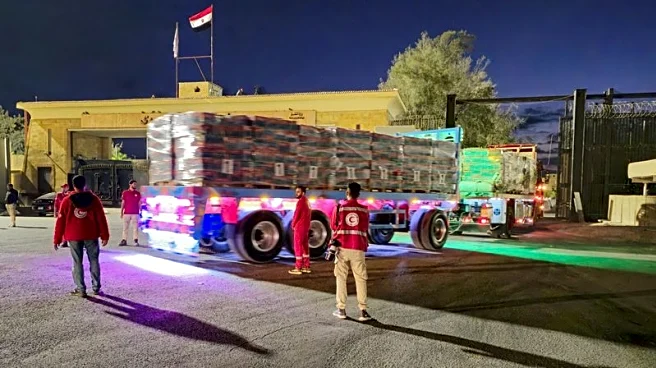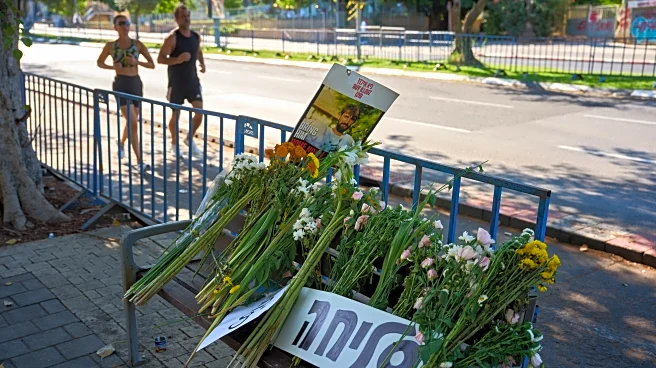What's Happening?
Humanitarian organizations are scaling up operations to deliver aid to Gaza amid the Israel-Hamas ceasefire. Despite progress in aid deliveries, logistical challenges persist due to restrictions imposed
by Israeli authorities and the destruction of infrastructure. Essential items like food, medicine, and hygiene products are in short supply, and winter is approaching, increasing the urgency for aid. The U.N. reported initial success in distributing meals and supplies, but border closures and limited truck access hinder efforts. Aid workers emphasize the need for open crossings and increased aid flow to meet the needs of displaced families.
Why It's Important?
The delivery of humanitarian aid to Gaza is crucial for addressing the needs of displaced families and preventing further deterioration of living conditions. The restrictions on aid flow and the destruction of infrastructure pose significant challenges to relief efforts. The situation highlights the broader implications of conflict on civilian populations and the importance of international cooperation in humanitarian response. The ability to deliver aid effectively will impact the health and well-being of thousands of families in Gaza, emphasizing the need for sustained ceasefire and open access for aid organizations.
What's Next?
The continuation of the ceasefire and the resolution of logistical challenges will be critical in ensuring effective aid delivery. Humanitarian organizations are likely to advocate for increased access and cooperation from Israeli authorities. The rebuilding of infrastructure, including water and sanitation systems, will be essential for long-term recovery. The international community may play a role in facilitating negotiations and supporting relief efforts to address the humanitarian crisis in Gaza.
Beyond the Headlines
The challenges in delivering aid to Gaza underscore the complex interplay of political, logistical, and humanitarian factors in conflict zones. The situation raises ethical questions about the prioritization of aid and the responsibilities of conflicting parties in ensuring civilian welfare. Long-term solutions may require shifts in policy and increased international engagement to address the root causes of the humanitarian crisis.
